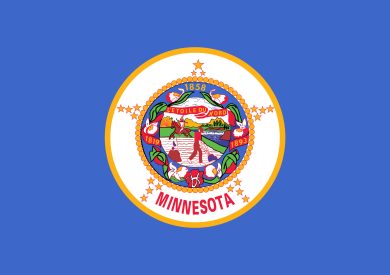
 Popular Cities For Lending in Minnesota
Popular Cities For Lending in Minnesota
Eagan
Eden Prairie
Lakeville
Maple Grove
Minneapolis
Plymouth
Rochester
St. Cloud
St. Paul
Woodbury
In the Minnesota real estate market, grabbing properties before your competition is essential for making the best deals. Although real estate investors sometimes go the traditional route and seek bank loans, the process is anything but speedy.
When time is of the essence, waiting for the lengthy process of getting approval is not an option for most investors. Minnesota hard money lenders specialize in providing hard money loans which provide quick funds to investors. These loans are for a non owner occupied property or in some cases for business purpose loans.
Minnesota Hard Money Lender FAQ’S
Below are some of the most frequently asked questions we get regarding hard money loans and lenders in Minnesota.
What Do Minnesota Hard Money Lenders Specialize in?
Minnesota hard money lenders specialize in providing short-term, creative financing for real estate investors. If you seek a conventional lender to purchase an investment property, your loan request will be based on the property’s value and your assets. Your credit score, job, and finances will be scrutinized intensely. Hard money lenders base their final loan decisions on the after-repair value. The ARV represents the potential value of a property after all repairs have been accomplished.
What are the Benefits of Minnesota Hard Money Loans?
Minnesota hard money loans offer advantages that traditional banks cannot. Lenders like Acamnet Financial offer a higher level of flexibility than banks. When qualifying for this type of loan, lenders do not delve too deeply into the finances of real estate investors. In most cases, simply present the property and your plans, which saves you the hassle of gathering countless financial documents.
Do Minnesota Hard Money Lenders Look at my Credit Score?
One of the greatest benefits of working with Minnesota hard money lenders is the lack of credit score requirements. One of the first things a bank does is check your credit score. You can get approved for a hard money loan in Minnesota even if you have bad credit or poor credit, bankruptcies, and foreclosures in the past. Minnesota Hard money lenders primarily care about the property you are purchasing.
What is the Interest Rate & Points for Hard Money Loans in Minnesota?
Interest rates for hard money loans in Minnesota are typically higher than traditional bank loans (conventional loans) because of the greater risk lenders must take on when approving loans. When searching for a hard money lender near me in Minnesota, you will find average interest rate is between 8%-15%. You should also be aware that lenders sometimes charge points that are meant to offset their administrative costs. Each point represents 1% of the total loan amount. The average points lenders charge is between 1 to 3. Some lenders may charge up to 10 points. These points are due upfront or at closing, depending on the lender.
What Should I Look for in a Minnesota Hard Money Lender?
There are many benefits to working with a Minnesota hard money lender. You just need to make sure you are working with the right lender. You can rely on Acamnet Financial Group when you need us most. We offer reliability, consistency, experience, and support. As a real estate investor, you know the importance of grabbing the best property deals when they become available.
How can Hard Money Lenders in Minnesota Help Me?
Whether you are new to real estate and real estate projects or an old pro, you know having the capital to purchase real estate is essential. Without funds, you will miss out on real estate transactions. When you partner with hard money lenders in Minnesota, you will quickly get the money you need without jumping through the hoops of traditional bank lenders.
How do I get a Hard Money Loan in Minnesota?
When you want a hard money loan in Minnesota, begin by preparing the property information. Location, size, purchase price, after repair value, repair costs, etc. In most cases, the financing will be based on these numbers. Then, apply for a hard money loan in Minnesota using this information and supply some financial information. Then, an appraisal will be ordered to assess the loan-to-value ratio, which will influence the loan amount.
How do I Refinance a Minnesota Hard Money Loan?
Refinance a Minnesota hard money loan will involve moving from a high interest, short term loan to a longer term, usually lower interest rate loan. Typically a conventional type of loan. When refinancing a Minnesota hard money loan you will find it will have a more stringent set of guidelines. You will need to have sufficient credit and income qualifications. As the lending landscaping and regulations constantly change, you want to consult a knowledgeable conventional loan expert.

Current Real Estate Trends In Minnesota (2024)
An analysis of real estate trends in Minnesota during May 2023 suggests a shift towards a more balanced market.
New listings and pending sales have decreased, leading to a decrease in closed sales.
Median sales prices, however, have remained mostly stable.
Buyers have seen a decrease in the percent of original list price received, providing potential negotiation opportunities.
Days on market and months supply of inventory have both increased, providing buyers with more choices.
Looking ahead, the Minnesota housing market is projected to remain stable with modest growth in various regions.
It is important to stay informed about market conditions, as they can change over time.
Market Overview
The Minnesota housing market is currently displaying signs of stagnation. Median sale prices have fallen by 0.95%, while the number of homes sold has declined by 30.4%. This suggests that the market is cooling off.
These facts speak volumes, indicating that the housing market in the state is not performing as well as it was in previous years.
Market Updates
Mortgage rates in Minnesota have jumped considerably, with a 33.13% increase from May 2022 to May 2023. This could have a significant effect on the local housing market.
When mortgage rates are higher, it can lower the affordability of home buyers, potentially reducing the demand for homes.
It is essential to monitor how this rise in mortgage rates will influence Minnesota’s real estate market in the future.
Housing Market Predictions
Mortgage rates have been on the rise lately, but analysts forecast an easing of the housing market in Minnesota come 2023. This is due to a myriad of reasons such as the Federal Reserve’s decision to forgo interest rate hikes and Minnesota’s advantage of low inventory and lack of foreclosures. Despite this, buyers are slowly entering the market, however, applications for mortgages have gone down 31% year-over-year. Lenders are also being stringent when it comes to borrowers, requiring a good credit score.
Factors that contribute to the stability of the housing market include strict lending standards, equity in homes, low foreclosure rates, and limited supply and demand. On the other hand, predicting the future of the market requires taking into account uncertain variables like potential interest rate hikes and a potential housing market recession. These could cause a decrease in home prices.
Sources
https://www.noradarealestate.com/blog/minnesota-housing-market/
https://www.houzeo.com/blog/minnesota-real-estate-market/
https://www.mprnews.org/episode/2023/07/17/how-dramatically-higher-interest-rates-have-reshaped-minnesotas-housing-market

All About Minnesota
Minnesota, the 12th largest state in the United States, is renowned for its diverse geography, encompassing prairies, forests, and numerous lakes.
With a population exceeding 5.75 million residents, over 60% of whom reside in the Minneapolis–Saint Paul metropolitan area, Minnesota ranks as the 22nd most populous state.
Its historical significance encompasses indigenous habitation predating the arrival of French explorers, followed by its incorporation into the Louisiana territory and subsequent admission to the Union as the 32nd state in 1858.
The state’s economy has transitioned from traditional industries to encompass services, finance, and healthcare, resulting in one of the nation’s highest GDP and per capita income levels.
Minnesota is well-regarded for its high standard of living, educational opportunities, and exemplary safety rankings.
Despite the absence of an official language, the state boasts a diverse population, notably including substantial Somali and Hmong American communities.
With its amalgamation of natural beauty, cultural diversity, and economic prosperity, Minnesota offers a multifaceted experience for its residents and visitors.
Geography
Minnesota’s geography is characterized by its vast forests, numerous lakes, and diverse ecosystems, making it a visually stunning and ecologically rich state.
Approximately one-third of the state is covered in forests, which consist of western prairies and deciduous forests, as well as the less populated North Woods.
Minnesota is famously known as the Land of 10,000 Lakes, but it has over 14,000 bodies of fresh water covering at least ten acres each.
The state’s latitude ranges from 43° 30′ N to 49° 23′ N, and its longitude ranges from 89° 29′ W to 97° 14′ W.
Located in the Upper Midwestern region of the United States, Minnesota offers a diverse and picturesque landscape.
Its stunning geography sets the stage for exploring the state’s population and demographics.
Population
With a population of over 5.75 million residents, Minnesota is the 22nd most populous state in the United States. More than 60% of Minnesotans live in the Minneapolis–Saint Paul metropolitan area, making it the 16th largest metropolitan area in the country.
Other minor metropolitan and micropolitan areas in the state include Duluth, Mankato, Moorhead, Rochester, and St. Cloud.
The population of Minnesota has been steadily increasing over the years due to a combination of natural growth and domestic migration. The state has seen a significant influx of immigrants from Latin America, Asia, the Horn of Africa, and the Middle East, adding to its multicultural character.
Understanding the population dynamics of Minnesota is crucial to understanding its history.
History
The history of Minnesota is intertwined with the presence of indigenous peoples, the arrival of European explorers and settlers, and the subsequent establishment of the Minnesota Territory as the 32nd state in 1858.
Indigenous peoples have inhabited the region since the 11th century BCE, and French explorers and missionaries were the earliest Europeans to enter the area.
Minnesota became part of the vast French holding of Louisiana in 1803 and later became a territory. The state’s official motto, ‘L’Étoile du Nord,’ reflects its early French explorers and northernmost position.
The history of Minnesota includes significant events such as the Dakota War of 1862, which resulted in the defeat of the Dakota and the government’s subsequent mistreatment of the Dakota people. This turbulent history laid the groundwork for the state’s development and shaped its future trajectory.
Moving forward, the history of Minnesota is closely connected to its economy, which has diversified from traditional industries to services, finance, and health care.
Economy
One of the critical drivers of Minnesota’s growth and development is its diverse and thriving economy.
Over the years, the state has successfully diversified from traditional industries to services, finance, and healthcare.
Minnesota boasts a strong economy with one of the highest GDPs and per capita incomes in the United States.
The state is home to 11 federally recognized Native American reservations, and it has a rich cultural heritage with influences from Scandinavian and German cultures.
However, Minnesota has recently become more multicultural, with larger domestic migration and immigration from Latin America, Asia, the Horn of Africa, and the Middle East.
This diversity has contributed to the state’s economic strength and has shaped its vibrant and dynamic business landscape.
Minnesota’s robust economy has also helped foster a high standard of living for its residents, which will be discussed in the subsequent section.
Standard of Living
Minnesota’s high standard of living is reflected in its rankings among the best states in employment, median income, safety, and governance. The state consistently ranks well in these metrics, demonstrating its commitment to providing its residents with a good quality of life.
With a median household income of $74,593, Minnesota ranks 13th in revenue. The state also boasts high levels of education, with a strong emphasis on quality schools and universities.
In addition, Minnesota is known for its low crime rates and efficient governance, which contribute to a sense of safety and security.
These factors, combined with a diverse and vibrant economy, make Minnesota an attractive place to live and work.


 Popular Cities For Lending in Minnesota
Popular Cities For Lending in Minnesota